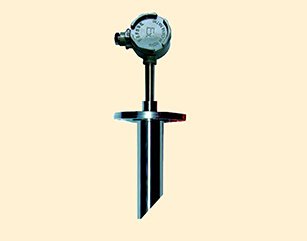
Working Principle
The cracking furnace thermocouple works based on the Seebeck effect — when two dissimilar metal conductors are joined at one end and exposed to heat, a voltage is generated that correlates with temperature.
In a cracking furnace, accurate temperature measurement is essential for maintaining reaction efficiency and controlling thermal conditions. This thermocouple provides real-time, reliable data from inside the furnace’s radiant and convection zones, even under extreme conditions such as:
- High heat (up to 1600°C)
- Corrosive gas atmospheres (e.g., H₂, CO, SO₂)
- High flow velocity and pressure
- Coking-prone environments
Main Applications
This thermocouple is specifically designed for pyrolysis and cracking units in the petrochemical industry, where hydrocarbons are thermally broken down to produce ethylene, propylene, hydrogen, and other valuable gases.
Typical Usage Scenarios:
- Ethylene cracking furnaces
- Hydrogen production reactors
- Steam reforming units
- Gas and oil pyrolysis systems
- Radiant and convection sections of furnaces
These environments require stable, long-term, high-temperature sensing that is resistant to chemical and mechanical damage.
Material Composition
To withstand the extremely aggressive furnace environment, cracking furnace thermocouples use premium-grade materials:
| Component | Typical Materials Used |
|---|---|
| Thermocouple Element | Type S, R, B (Platinum-rhodium); Type K, N (Nickel-based alloys) |
| Protection Tube | Inconel 600/601, Hastelloy X, Kanthal APM, Silicon Carbide |
| Inner Insulators | High-purity alumina or ceramic beads |
| Outer Sheath | Metal or ceramic tubes with optional anti-coking coatings |
| Head/Connector | Explosion-proof, weatherproof, or sealed stainless steel terminal heads |
Product Features & Advantages
- Extreme Temperature Endurance
Operates reliably at sustained temperatures up to 1600°C. - Anti-Coking and Corrosion Resistant
Special coatings and materials minimize coke buildup and resist chemical attack. - Stable, Long-Term Accuracy
Designed to reduce signal drift, degradation, and failure from thermal shock. - Customizable Design
Available in various diameters, lengths, sensor types, and mounting styles (flange, threaded, or compression fitting). - Explosion-proof Options
Available with Ex d or Ex ia-rated heads for hazardous environments. - Low Maintenance
Long service life minimizes shutdowns and replacement costs.
Design Options
- Single or dual thermocouple elements
- Flexible armored cable or hardwired terminal head
- Straight or angled structure
- Optional thermowell or double protection tube
Conclusion
The Cracking Furnace Thermocouple is a mission-critical component in petrochemical thermal processes. Its high durability, measurement stability, and resistance to harsh furnace conditions make it an essential tool for ensuring process efficiency, safety, and product quality in high-temperature cracking operations.
